Generally air transport in Africa has often lagged behind for decades. Throughout Africa, just a few airports were developed during the colonial era. These airports were constructed to link the colonies to the colonial master powers. As a result, to date, traveling from one African country to another remains problematic. This explains why it is simpler to travel from Doula, Cameroon, to Paris, France, than from Douala to Malabo (Equatorial Guinea), even though Malabo is visible to the unaided eye from Douala.
Modern day Africa is in the process of being transformed by its growing middle class. In some countries, like Mozambique and Angola, this has led to an explosion of domestic travel that is driving up demand for air travel. But in other countries where there is limited aviation infrastructure, people have not yet embraced domestic flights as readily as their counterparts elsewhere on the continent.
Air transport in Africa is improving, with the number of passengers increasing at a faster rate than anywhere else in the world
The air transport industry in Africa is improving, with the number of passengers increasing at a faster rate than anywhere else in the world. In fact, it is one of the fastest-growing regions for air travel and is expected to reach $35 billion by end of 2023, according to Global Market Insights.
The reason for this growth is simple: it makes sense economically for Africa’s citizens to fly instead of drive or take trains when traveling long distances due to poor road conditions or insufficient rail networks. Additionally, as more people become wealthy due to rapid economic growth across Sub-Saharan Africa (SSA), they will have more money with which to travel domestically or abroad via plane rather than other modes of transportation that are slower, less comfortable, and more expensive (e.g., cars).
A report by the International Air Transport Association, whose members include all major airlines, shows that African air travel has been rising by an average 10% per year since 2013
According to a report by the International Air Transport Association, whose members include all major airlines, African air travel has been rising by an average 10% per year since 2013. This growth is driven by both the rapid increase in Africa’s middle-class and business travelers and the rise of low-cost carriers. The number of domestic flights within Africa is still very low—only one flight for every 100 people on the continent, compared with one for every four people anywhere else in the world—but this ratio is increasing rapidly as well.
The demand is being driven by business travelers and a growing middle class
The demand for air travel is being driven by business travelers and a growing middle class in Africa. The success has also been attributed to low-cost airline models which allow airlines to operate at a profit on flights that would otherwise be unprofitable.
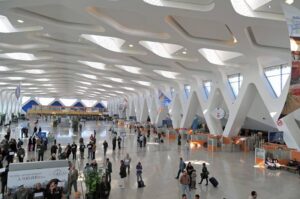
Menara International Airport in Marrakech Morocco is a busy airports in Africa (From Morocco World News)
Even though more people are flying between African cities, there are still too few domestic flights
This is a problem because it means people have to go through Europe or the United States to get on a plane.
If you look at Equatorial Guinea, there is no direct connections to any other part of Africa. Most people have to fly into Europe and then connect. It is partly because it’s been expensive for some airlines to operate in Africa.
If countries want tourists from outside Africa, they need direct flights between their capital cities and those of other countries on the continent.
Airlines compete by offering lower fares to a wider range of destinations.
Airlines operating in Africa are low-cost, which means it charges cheaper prices than other airlines in the region. This helps it attract more customers who otherwise wouldn’t be able to travel as easily because of their financial situations. They offer service to a wide range of destinations within South Africa and into neighboring countries like Namibia and Mozambique, but it doesn’t fly to more distant locations like Europe or Asia.
Airlines focus on a reputation for being customer-focused has been strengthened by its cooperation with African tourism agencies and local businesses who have worked together to promote tourism by offering special deals on flights when booked with hotels or tours.
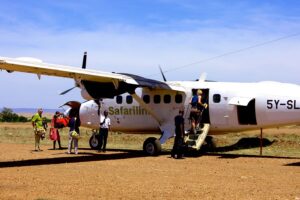
Bushplanes for domestic flights within Kenya and to neighboring Tanzania, particularly popular safari destinations (Photo from Trip Savvy).
In some countries like Mozambique, Angola and Botswana, domestic air travel is growing extremely quickly because there are FEW OR no good alternatives to flying
These countries have a lack of good alternatives to flying. They don’t have good rail or road networks, and they don’t have many intercity buses either. In these places, domestic air travel is growing extremely quickly because there are few or no good alternatives to flying.
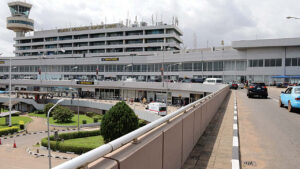
Murtala Muhammed International Airport was initially built during World war II (From Airlive News)
Africans are increasingly taking to the skies
African air travel is growing at a faster rate than anywhere else in the world. The number of passengers increased by almost 40% between 2010 and 2015, compared to a 23% increase globally. That’s good news for airlines such as Ethiopian Airlines, South African Airways, Rwandair, and Kenya Airways, who are investing heavily in new aircraft fleets.
While many Africans still fly internationally rather than within Africa, there is strong demand from business travelers and a growing middle class for domestic services across the continent’s 54 countries.
African countries have an opportunity to develop their air transport, flag carrier airline, and Aviation sector. Rwanda is an excellent example of this trend: with just 5 million people it has Europe-standard infrastructure including modern airports with international flights that connect with major destinations around the world; these include London Heathrow (via Brussels), Dubai (via Abu Dhabi) or Bangkok (via Kuala Lumpur).
Conclusion
Africa’s air transport sector is expanding tremendously. This growth will continue to grow over the next few years as more people use it as an affordable way of travelling around the continent. We believe that this will open up new markets for tourism and trade across Africa, which is good news for everyone concerned.
CHECK:TRANSPORTATION AND TRAVEL TRENDS IN AFRICA
ALSO LOOK AT AIR transport exhibits
Featured Image Source: Design AI
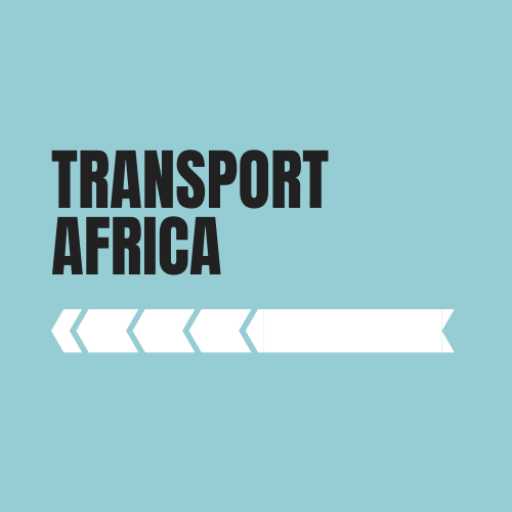
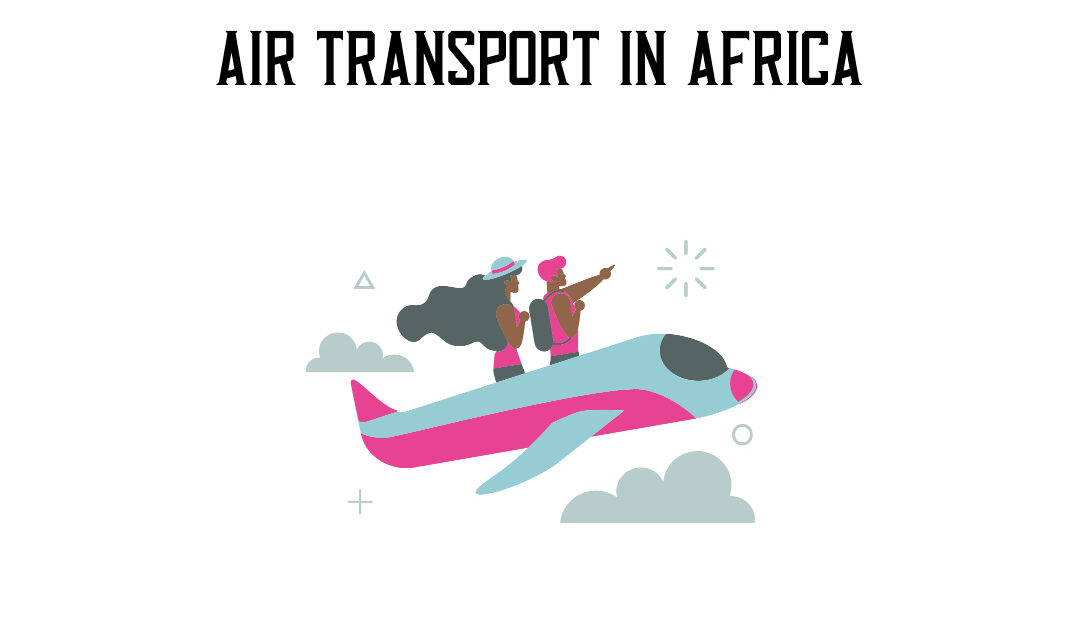
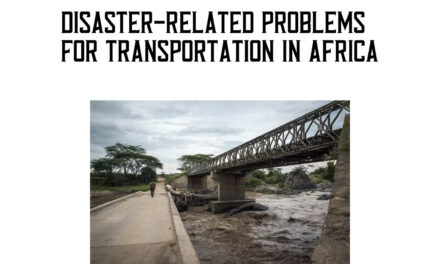

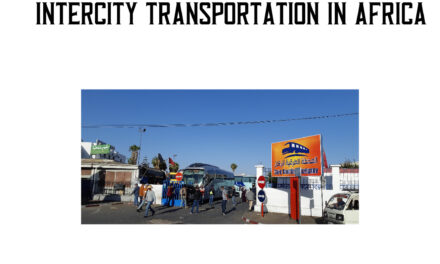
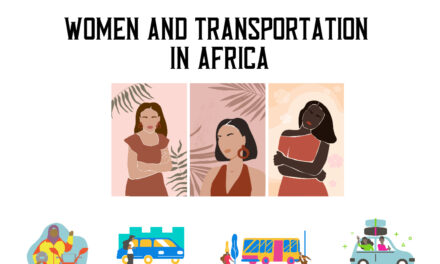
Appreciating the hard work you put into your site and in depth information you present. It’s awesome to come across a blog every once in a while that isn’t the same outdated rehashed information. Fantastic read! I’ve saved your site and I’m adding your RSS feeds to my Google account.